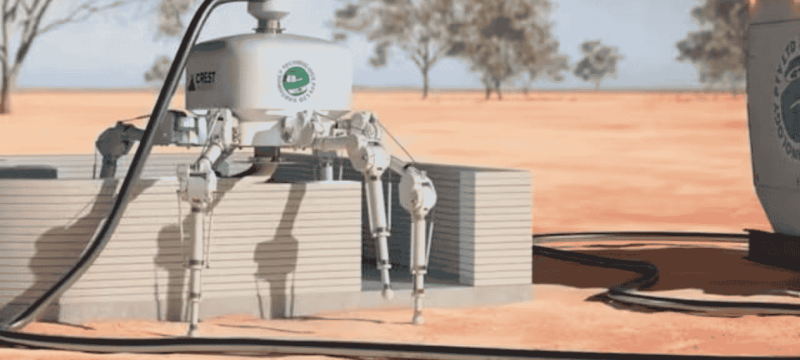A legged construction machine called Charlotte, known as a spider robot, is being developed in Sydney to 3D-print full-size homes in about 24 hours. The system can autonomously build structural walls for a 2,150-square-foot house using local materials, eliminating the need for cement, bricks, and long supply chains.
Instead of traditional construction methods, the spider robot compacts sand, soil, and clean waste directly on-site. This single-machine approach reduces carbon emissions and simplifies building, as the robot forms walls layer by layer. Charlotte’s mobility allows it to move across uneven terrain, making it suitable for remote or hard-to-reach sites.
Crest Robotics, led by Clyde Webster, is spearheading the project. The company focuses on agile robots that perform repetitive or hazardous construction tasks. Dr. Jan Golembiewski, co-founder of Earthbuilt Technology, explained that Charlotte’s extrusion system produces continuous walls without mortar joints, guided entirely by digital plans. The robot can work at a speed comparable to over 100 bricklayers.
The spider robot also addresses environmental concerns. The construction industry contributes nearly 37 percent of global carbon emissions. By using on-site materials and converting waste into building material, Charlotte can significantly cut costs and emissions.
Beyond Earth, Charlotte’s lightweight and foldable design has drawn interest from space agencies. Concepts for lunar construction suggest similar 3D-printing systems could use lunar regolith to build radiation-shielded habitats. Developers are exploring material adaptations for low gravity, vacuum conditions, and extreme temperatures.
Despite its potential, challenges remain. Material consistency, structural safety, fire resistance, and regulatory compliance must be rigorously tested. Early deployment will likely focus on low-rise buildings, where approvals are simpler. The system also raises questions about labor displacement, though experts argue that robots could complement skilled workers rather than replace them.
Charlotte represents a new era in construction, combining robotics, 3D printing, and sustainability. The spider robot could reshape housing, reduce carbon emissions, and pave the way for both terrestrial and extraterrestrial construction projects.
In other news read more about: The Wild Robot: DreamWorks Delivers a Stunning Blend of Technology and Artistry







